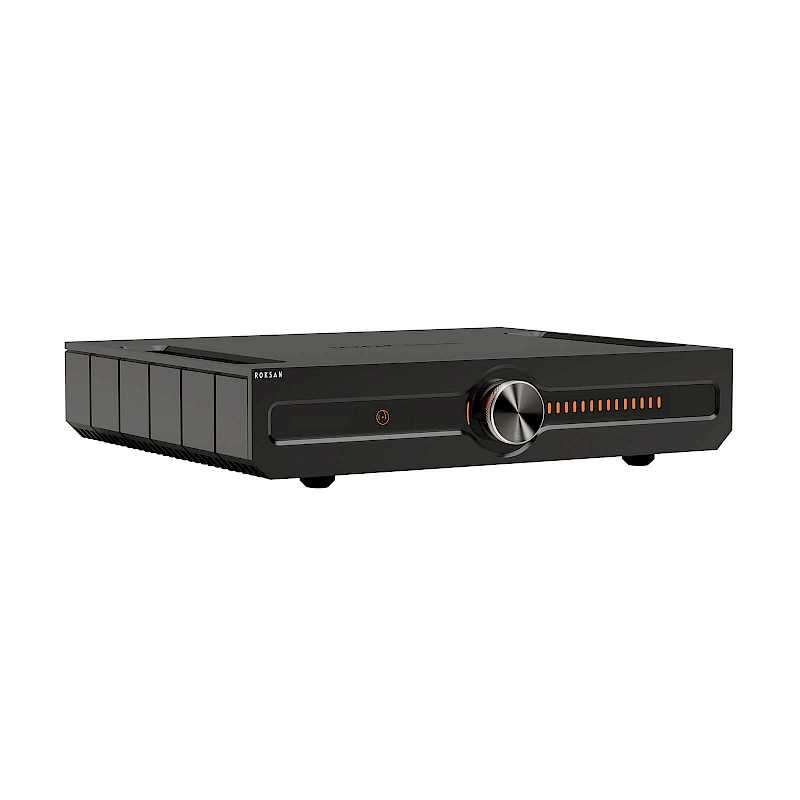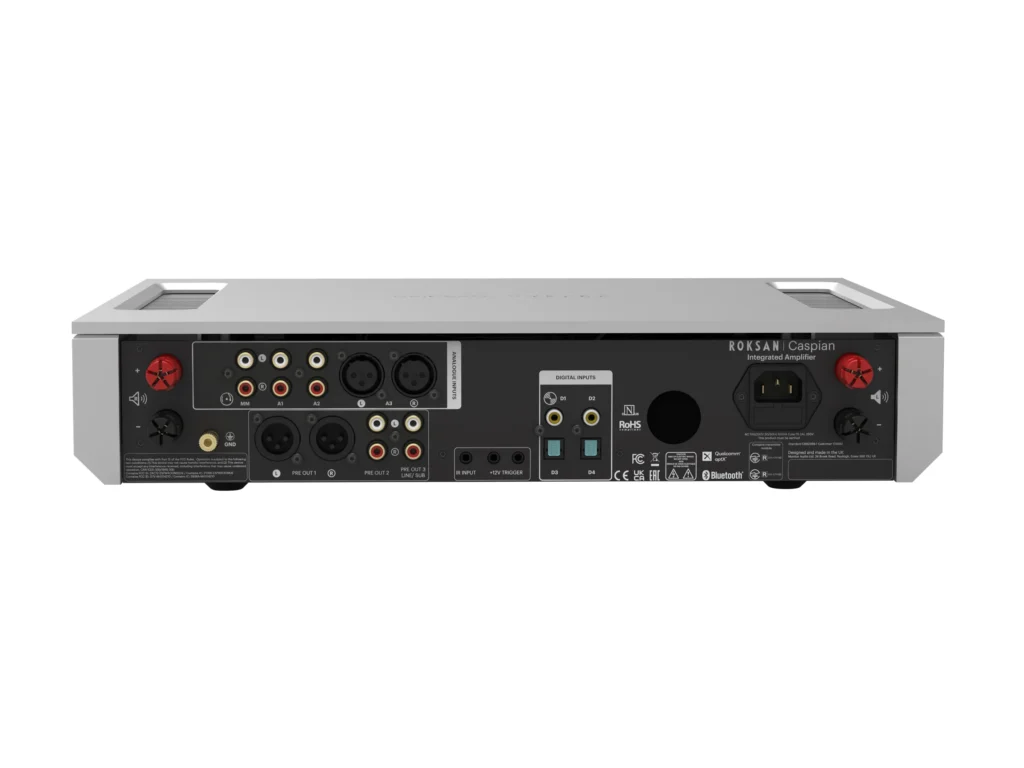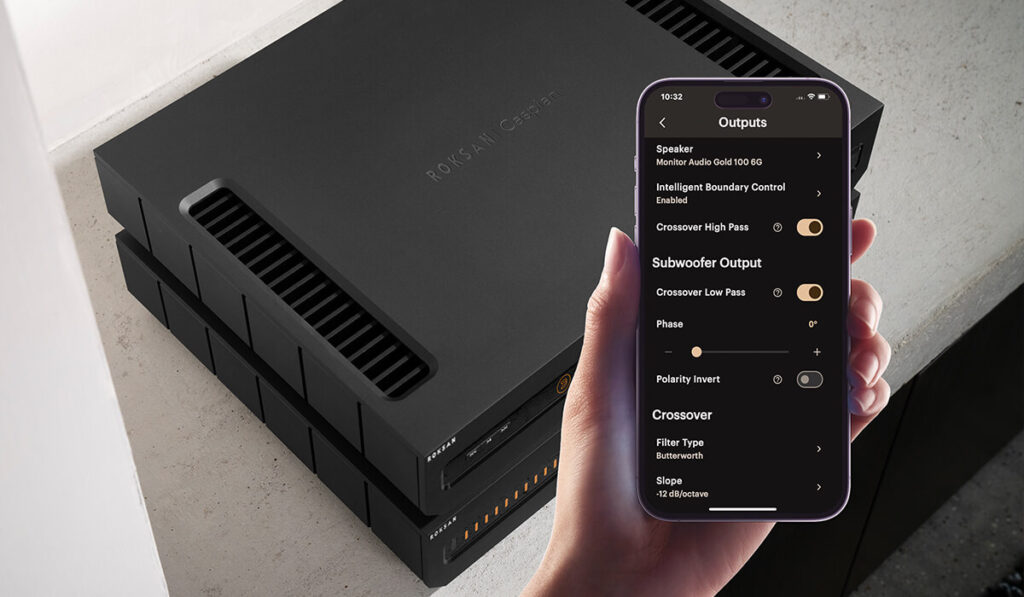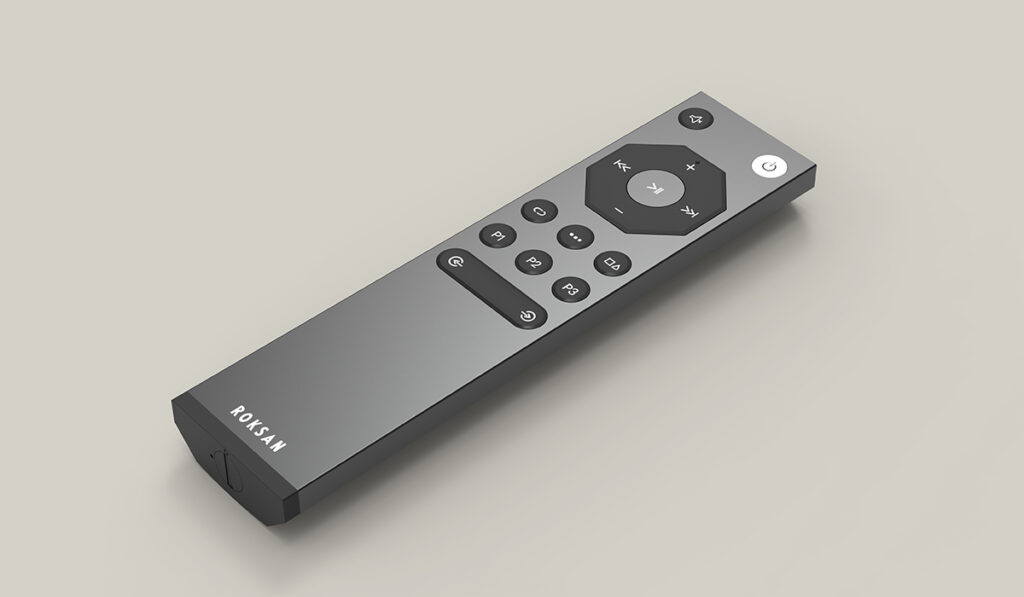The Roksan Caspian 4G amplifier is the fourth-generation flagship from Roksan, a brand acquired by Monitor Audio in 2016. In this review, I’ll explore how this integrated amplifier performs in a modern HiFi setup and whether it still holds its ground in 2025.
As you begin to expand on your HiFi system, matching components becomes increasingly important. An underpowered amplifier or a streamer with limited connectivity can affect the performance of your entire setup. One solution is to go with an all-in-one product like the Cambridge Audio Evo 150 streaming amp, or the NAD Masters M66 streaming DAC preamplifier; another is to stick with components from the same brand, which often means sacrificing variety for synergy.
Some manufacturers, like Denon and Marantz, or Wharfedale and Audiolab, solve this by separating their product lines across different brand names while ensuring tight integration. Monitor Audio follows a similar strategy: producing speakers under their main brand and amplifiers under Roksan.
The Caspian 4G falls right into this philosophy. I recently reviewed the Monitor Audio Gold 100 6Gs, and I was eager to find out how the Caspian sounds and works with the Gold 100s.
Price
The Caspian 4G retails for $3000, and you can get the BluOS model for $4000, which effectively converts this unit into a streaming amplifier. BluOS adds streaming capabilities with support for 20+ streaming apps, and you also get HDMI eARC. For those who already have a preferred streaming DAC or use separates, the standard model makes more financial sense. But if you’re starting from scratch or want a single-box solution, the BluOS version is a compelling long-term buy. Both models include the same internal amplifier and DAC design, so audio performance remains identical across analog and digital sources.
Design And Build Quality
The Roksan Caspian 4G is a classic-looking amp with modern refinements. It is the fourth generation in Roksan’s flagship integrated amplifiers, and it replaces the M2 Models that were released in 2010. It’s safe to say that Roksan needed an update, in both design and features, and the Caspian delivered.
I opted for the standard preamplifier, which comes in two finishes, Silver and Black. The chassis is made from a thick piece of extruded machined Aluminum, and it has heatsinks on the top cover.
The styling is old-school, with a multi-use control dial in the center with backlit OLED icons. The case is a step above the previous models, and it looks like Titanium at first glance. There are no screws or visible fixings, the dial is smooth and resistive, and the sound levels are displayed both numerically and with a series of LED lights.

The minimalist front panel includes a multi-function control dial, OLED display, and LED indicators.
Power Supply and DAC
The Roksan Caspian 4G offers 105W into 8 ohms and 200W into 4 ohms. It has a 600VA toroidal transformer, which has 36,400uF of capacitance per rail. For the moving magnet phono stage, the gain is set at 53dB, adjustable by 6dB in both directions.

Under the hood: A 600VA toroidal transformer, dual-mono Euphoria amplifier design, and 36,400μF capacitance per rail.
The Caspian 4G employs Roksan’s proprietary Dual Mono Euphoria Amplifier. This amplifier uses two separate power supplies for voltage and current, ensuring that the performance remains unaffected regardless of the electricity load. It also has Roksan’s Rapture DAC, which has a differential current-conveyor topology. This topology has superior gain-bandwidth characteristics, which allow more information to be extracted for the best possible analogue reproduction.
Caspian 4G Connectivity
Pressing and holding down the dial will take you to the input selection. The Caspian 4G has three analog inputs, four digital inputs, a moving magnet phono stage, and a Bluetooth connection. You get SBC, aptX, and AAC codecs, and the coaxial and optical inputs support audio up to 24-bit/ 192 kHz.

Connectivity includes analog inputs, digital coaxial/optical, a moving magnet phono stage, Bluetooth, and pre-outs for future upgrades.
If you get the BluOS version, you can stream formats like MP3, AAC, WMA, OGG, WMA-L, ALAC, and OPUS. The 4G will support high-resolution formats like MQA, FLAC, and WAV, AIFF, and DSD playback through a desktop. This model also supports Apple AirPlay, Spotify Connect, Tidal Connect, and it has support for control integrations like Creston, Control4, Lutron, URC, and more.
The Caspian 4G makes use of Monitor Audio’s in-house designed MaestroUnite app. It allows users to quickly set up their device, enabling connection to a local Wi-Fi network. With the app, users can control features such as input configuration, headphone sensitivity, analogue input gain, balance, and low power standby. It also utilises Roksan’s innovative DSP Engine’s enhanced features, which help users tailor their listening for a specific environment.

Monitor Audio’s MaestroUnite app lets you configure inputs, tweak gain and balance, and integrate with smart home systems.
A remote control comes in the box with both models of the Caspian 4G; however, it doesn’t quite follow the 4G’s simple design. It is also made from extruded Aluminum, with organized buttons for volume control and input selection.

The included remote matches the amp’s aluminum finish, offering direct access to volume, inputs, mute, and standby.
Sound Quality
What’s immediately striking about the Roksan Caspian 4G is its command of space and texture. There’s a clear sense of dynamic control, with enough headroom to let tracks breathe naturally, never sounding strained, even at higher volumes. It delivers a slightly warm but detailed presentation, bringing out the full character of vocals and instruments without tipping into coloration or softening the transients.
Listening to Dreams by Fleetwood Mac or Royals by Lorde through the coaxial input, the Caspian’s digital section shows off its grip: clean transients, a confident low-end, and a soundstage that spreads wide without losing center focus. There’s nuance in the way the amp handles background elements, vocal layering, trailing reverbs, and subtle synth swells. It doesn’t throw details at you aggressively; they emerge naturally with focused listening.
The phono stage is no less impressive. Spinning up Kind of Blue by Miles Davis or Rumours, there’s an immediate sense of presence, the trumpet on So What cuts through with crisp clarity, while the bass and cymbals stay tight and controlled. Surface noise is handled gracefully. Even on more energetic records like Abbey Road or Back to Black, the Caspian 4G keeps timing tight and textures full. Vinyl through this amp doesn’t feel like a nostalgic compromise; it feels refined, immersive, and truly hi-fi.
I paired the Caspian with the Monitor Audio Gold 100 6G speakers, which I reviewed recently, and that combination makes perfect sense. The Gold 100s are analytical enough to reveal what the amp is doing, but forgiving enough to let its musicality shine. Together, they create a stereo image that’s immersive and well-defined, with bass that’s tight and articulate. If you’re building a system around either of these components, the synergy is real, and this pairing elevates both pieces beyond what they do individually.
Verdict: Should You Get The Roksan Caspian 4G
If you’re in the market for an integrated amplifier that leans into musicality without sacrificing clarity or control, the Roksan Caspian 4G deserves your attention. It feels purpose-built for the enthusiast who wants the flexibility of digital and analog done right.
There’s genuine attention to detail across the board: thoughtful input configuration, a surprisingly refined DAC, a vinyl stage that lives up to Roksan’s heritage, and a chassis that’s built to last. In terms of sound quality, it has the kind of dynamic energy and tonal richness that makes long listening sessions addictive, especially when paired with capable speakers like the Monitor Audio Gold 100s.
At $3000 ($4000 with BluOS), it’s not trying to compete on sheer value. What you get here is cohesion, not just between features, but in how this integrated amplifier makes music feel. It’s not trying to impress you with gimmicks or tuning tricks. It just gets out of the way and lets the performance through. And that, in 2025, is something worth paying for.
